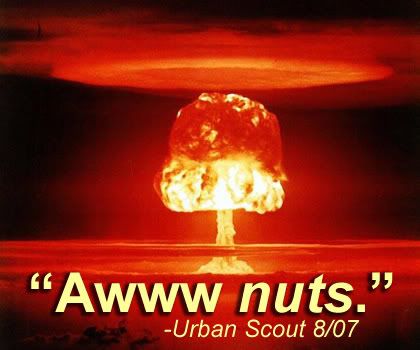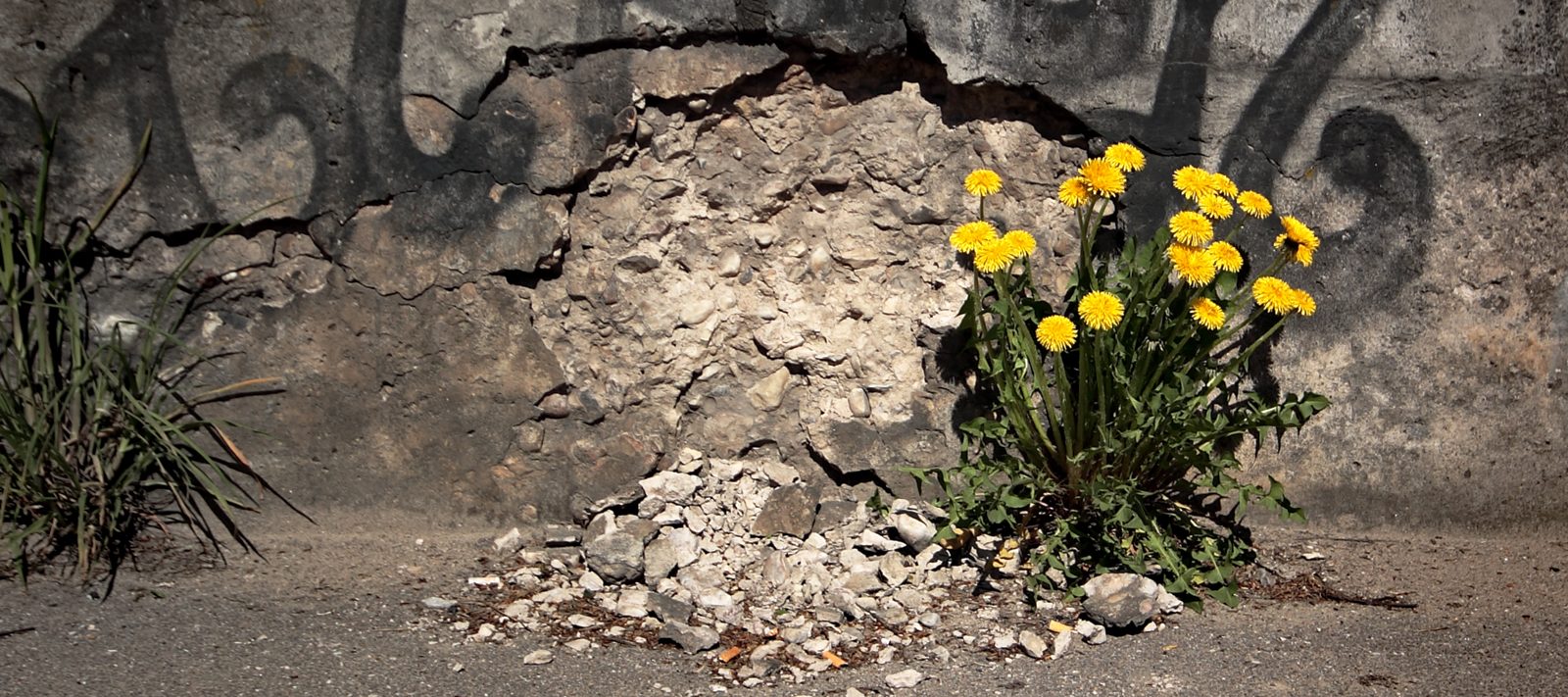Survive Nuclear Fallout, With Your Balls Out

The other night I sat around a picnic table in the backyard of my friend Lisa’s house. We joked about the terror drill and how fucked up it would feel if a nuclear bomb went off in Portland. We all made the usual comments about hoping to receive a quick death, praying that we will have the luck to stand at ground zero went it hits. As our laughter died down, Penny said sort of deadpan, “You know, if a nuke goes off you need to start digging in the ground to protect yourself from the fallout. The dangerous radiation only lasts a few days I think. Also, you can hunt and eat the animals who live underground because they will not have radiation poisoning usually…”
Everyone stopped and looked at her. “Glad to have you here,” uttered Lisa in a serious tone. Though Penny did not have the concrete facts on the subject (most she heard second hand from her last boyfriend), the information felt enough to make me realize that it may not mean the end of the world and that strategies for surviving a nuke may exist. I began to scour the internet for information on how to make the best, of the worst.
It turns out I have fallen prey to the propaganda that you can do nothing to save yourself from nuclear fallout. Of course, if the bomb goes off right next to you, unless god stops the explosion, you will die. People joke about how ludicrous it seems to “duck and cover” with the threat of a nuclear bomb. The duck-and-cover method however, exists for a reason; to help you survive the shockwave. If you don’t die in the initial blast, the best thing you can do during and right after you see a flash, involves the duck and cover maneuver.
If the initial blast does not kill you, and the duck and cover method helps you survive the shockwave, I found out that you can avoid the radiation from fallout too:
The principles of radiation protection are simple – with many options and resources families can use to prepare or improvise a very effective shelter. You must throw off the self-defeating myths of nuclear un-survivability that may needlessly seal the fate of less informed families
It works like this: a bomb goes off and the mushroom cloud kicks up dust and makes it radioactive. This dust then goes all over the place, mostly down-wind. The dust can take days to settle. The radiation on the dust can penetrate further than the dust. For example, if the dust lands on your clothes, the radiation will go through your clothes. It has a range though and that makes me less anxious, though only slightly.
Radioactive fallout from a nuclear explosion, though very dangerous initially, loses its intensity quickly because it is giving off so much energy. For example, fallout emitting gamma ray radiation at a rate of 500 R/hr (fatal with one hour of exposure) shortly after an explosion, weakens to only 1/10th as strong 7 hours later. Two days later, it’s only 1/100th as strong, or as deadly, as it was initially.
This means that if you can keep the dust at a great enough distance, or put enough mass between you and the dust for a long enough time, the threat of radiation poisoning becomes smaller with every second, a few days later, you may make your evacuation out of the area without serious radiation poisoning.
The thicker the mass, the more radiation it stops. Also, the denser (heavier) the mass used, the more effective it is with every inch more you add to your fallout shelter. The thickness in inches needed to cut the radiation down to only 1/10th of its initial intensity for different common materials is: Steel 3.3″, concrete 11″, earth 16″, water 24″, wood 38″, etc. The thickness required to stop 99% of the radiation is: 5″ of steel, 16″ of solid brick or hollow concrete blocks filled with mortar or sand, 2 feet of packed earth or 3 feet if loose, 3 feet of water. You may not have enough steel available, but anything you do have will have mass and can be used to add to your shielding – it just takes more thickness of lighter wood, for example, than heavier earth, to absorb and stop the same amount of radiation. Increasing the distance between your family and the radiation outside also reduces the radiation intensity.
With this knowledge I think to myself, “If a nuclear bomb went off right now, what would I do?”
1. Fill a large container with water from the toilet bowl in case the pipes had damage done to them from the explosion.
2. Seal up the house as good as I can.
3. Make my way to the basement and build a make-shift shelter with as much mass as I can muster in as quick amount of time as possible.
4. Wait for 3-4 days before I emerge, than try to evacuate before the government sends in “aid.”
It feels kind of funny to have the thought, “Oh. Maybe nuclear armageddon won’t have such adverse effects as I thought…” Though I know it still will, at least I may have a chance of surviving 1 nuke in Portland, OR. Rather than hang up the towel and watch the city burn, I can hunker in my little hole for a few days and come out on top. It feels much more empowering to know that I can at least have a little control over such a monumental event. Download the whole article on fallout preparedness here.
I would like to thank Operation Noble Resolve for inspiring me and other citizens of Portland to think about the effects of terrorism and nuclear bombs.
**I wrote this blog in E-prime.**
—
Show your support and appreciation for Urban Scout


It’s kind of achievable, although all the “stay at home” stuff has always made me think they want as many of us to die in cities as possible.
There’s some British civil defence stuff on Youtube:
A Guide to Armageddon is in three parts.
There are 20 short Protect and Survive films which are all up as well.
Finally, everyone should watch Threads at least once – this is a notorious TV movie about the aftereffects of a nuclear holocaust. The title is from what happens when the threads of an urban society break down…
Oh, they also have The War Game, which is short, black and white and was banned for 20 years. Also worth a look.